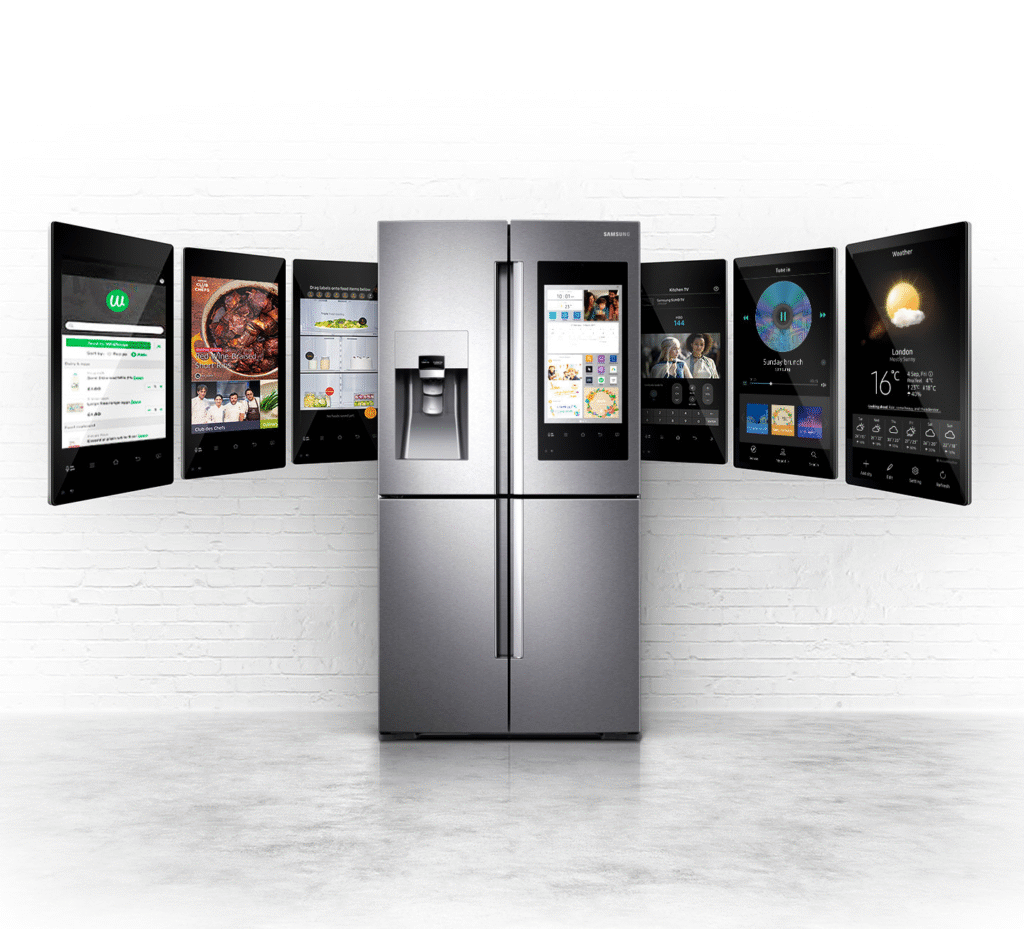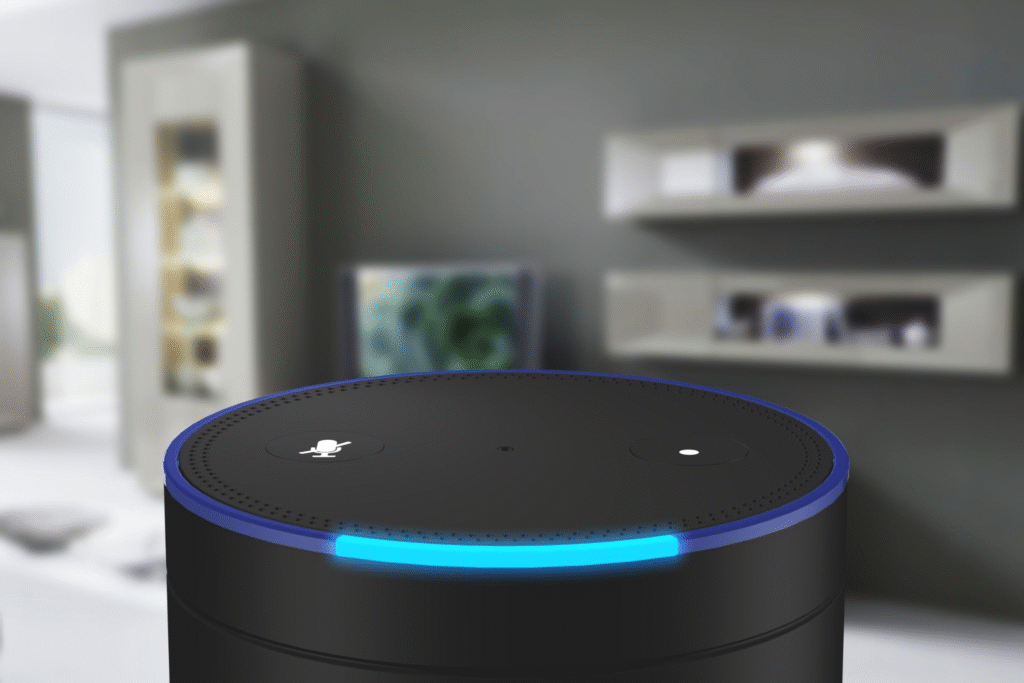Imagine walking into your home after a long day, and with a single voice command, the lights adjust to your preferred brightness, your dinner starts cooking in a smart oven, the thermostat sets the perfect temperature, and your security cameras activate “night mode.” Welcome to 2025—a year when smart home appliances are no longer futuristic luxuries but essential tools for comfort, convenience, and sustainability.
The global smart home market is expected to reach over $222 billion by 2025 (Statista), driven by AI, IoT, and the universal adoption of the Matter standard, which ensures interoperability among devices from brands like Google, Apple, Amazon, and Samsung. For homeowners, this means smarter kitchens, energy-efficient systems, advanced security, and time-saving automation—all designed to make life easier.
In this blog, we’ll explore the Top 10 Smart Home Appliances of 2025, diving deep into how each is transforming homes worldwide. Whether you’re a tech enthusiast or just looking for practical upgrades, this list will guide you through the most innovative devices worth considering.
1. Smart Refrigerators – Your Kitchen’s AI Hub
Smart refrigerators in 2025 are more than just storage—they’re kitchen command centers. Brands like Samsung Family Hub and LG InstaView now feature:
- Built-in AI that tracks food inventory and suggests recipes.
- Integration with online grocery platforms for automated restocking.
- Touchscreens with family calendars, reminders, and entertainment apps.
- Energy-efficient cooling systems with predictive maintenance alerts.
Why it matters in 2025: With rising food costs, these fridges help households cut waste while promoting healthier meal planning.

2. Smart Ovens & Cooking Appliances – Effortless Gourmet Meals
Gone are the days of burnt dinners. Smart ovens like the June Oven and Tovala now use AI-powered cameras to identify food and automatically adjust cooking settings.
Key features include:
- Voice control via Alexa, Siri, or Google Assistant.
- App-based monitoring for remote cooking.
- Preloaded recipe libraries with step-by-step guidance.
- Multi-cooking modes (air frying, baking, roasting, steaming).
Impact: Busy households save time while enjoying restaurant-quality meals.
3. Smart Thermostats – Mastering Energy Efficiency
With climate change concerns, smart thermostats like Nest and Ecobee are becoming must-haves.
- AI learns your schedule to optimize heating/cooling.
- Integration with renewable energy sources like solar panels.
- Voice and smartphone controls.
- Energy reports with cost-saving recommendations.
Why now: As utility bills rise, smart thermostats reduce consumption by up to 20% annually (Energy Star).
4. Robot Vacuums & Smart Cleaners – Autonomous Home Care
Robot vacuums, once gimmicky, are now essential AI-powered cleaners. Brands like iRobot Roomba j9+ and Roborock S8 offer:
- Advanced LiDAR mapping with multi-floor memory.
- Self-emptying docks with weeks of autonomy.
- Mop-and-vacuum combos for deeper cleaning.
- AI object recognition to avoid cables and pet messes.
Why it’s a game-changer: Freeing up hours of housework each week.
5. Smart Security Systems – AI-Powered Peace of Mind
Safety is a top priority, and smart cameras and doorbells from Ring, Arlo, and Nest have evolved significantly.
Features include:
- 4K video with night vision.
- AI that distinguishes people, pets, and packages.
- Integration with local emergency services.
- Privacy-first settings with end-to-end encryption.
Trend for 2025: Security devices are increasingly bundled into whole-home ecosystems, ensuring seamless monitoring.
6. Smart Washing Machines & Dryers – Laundry That Thinks for You
Laundry has gone high-tech with appliances from LG ThinQ and Samsung SmartThings.
Benefits:
- AI detects fabric type and adjusts cycles.
- Integration with home water and energy management.
- Notifications when detergent is low.
- Remote scheduling via app.
Consumer value: Saves water, energy, and time—while extending the life of clothes.
7. Smart Lighting Systems – Mood & Energy Control
Lighting in 2025 is about ambiance, security, and savings. Philips Hue and Nanoleaf dominate the market.
- Circadian rhythm syncing (lights adjust with your natural body clock).
- Motion-triggered lighting for security.
- Full-color customization via app or voice.
- Energy optimization by dimming during peak hours.
Why it matters: Smart lighting reduces energy bills while improving mental well-being.
8. Smart Showers & Bathrooms – Wellness at Home
Smart bathrooms are no longer futuristic—they’re here. Smart showers like Moen U by Moen and Kohler Konnect allow you to:
- Control water temperature and flow via app/voice.
- Track water usage for eco-conscious living.
- Enjoy personalized “shower profiles” for different users.
- Integrate with music and lighting for a spa-like experience.
2025 shift: The bathroom becomes a wellness sanctuary, blending health and relaxation.

9. Smart Energy Storage & Management – Powering the Future
Energy management is now central to the smart home. Products like Tesla Powerwall and Enphase IQ integrate with appliances.
- Store excess solar energy for nighttime use.
- AI-driven energy distribution to high-use devices.
- Backup power during outages.
- Integration with EV chargers.
Why it’s crucial: Rising electricity demand and sustainability goals make this a cornerstone of modern homes.
10. Smart Voice Assistants & Home Hubs – The Brain of Your Home
Finally, none of these devices function seamlessly without AI-powered hubs like Amazon Alexa, Google Home, or Apple HomePod.
- Matter compatibility ensures all devices “speak” to each other.
- Advanced AI for predictive automation.
- Unified dashboards for managing energy, security, and entertainment.
- Contextual voice recognition for multiple household members.
2025 advantage: Your smart home becomes more intuitive, anticipating your needs rather than just responding.
Comparison Table – Top Smart Home Appliances 2025
| Appliance Type | Leading Brands (2025) | Key Innovation | Consumer Benefit |
| Smart Refrigerators | Samsung, LG | AI meal planning, inventory tracking | Reduced food waste, healthier living |
| Smart Ovens | June, Tovala | AI cooking recognition | Time-saving, gourmet results |
| Smart Thermostats | Nest, Ecobee | Renewable energy integration | Energy cost savings |
| Robot Vacuums | Roomba, Roborock | Self-cleaning docks, AI navigation | Less housework, efficiency |
| Smart Security Systems | Ring, Nest, Arlo | AI-powered monitoring, encryption | Safer homes, peace of mind |
| Smart Washers/Dryers | LG, Samsung | AI cycle detection | Efficiency, eco-friendly laundry |
| Smart Lighting | Philips Hue, Nanoleaf | Circadian rhythm syncing | Better sleep, energy savings |
| Smart Showers | Moen, Kohler | Personalized water/temperature control | Wellness, sustainability |
| Smart Energy Storage | Tesla, Enphase | Solar integration, backup power | Resilience, eco benefits |
| Smart Hubs/Assistants | Alexa, Google, Apple | Matter-enabled predictive AI | Seamless automation |

Conclusion
The smart home of 2025 is more connected, efficient, and personalized than ever before. From AI-powered refrigerators that reduce waste to energy management systems that keep homes sustainable, these appliances are no longer luxuries—they’re becoming necessities.
Key takeaway: Investing in smart appliances is not just about convenience; it’s about future-proofing your home for sustainability, security, and comfort.
FAQs:
1. What are the must-have smart home appliances in 2025?
Some of the top smart appliances for 2025 include AI-powered refrigerators, voice-controlled ovens, robotic vacuum cleaners, smart washing machines, and energy-efficient smart thermostats. These devices not only improve convenience but also help save time and energy.
2. Do smart home appliances save money in the long run?
Yes, most smart appliances are designed with energy efficiency in mind. For example, smart thermostats reduce unnecessary heating and cooling, while smart washers and dishwashers optimize water and electricity use. Although the upfront cost may be higher, they often lead to long-term savings.
3. Can I control smart appliances without Wi-Fi?
Most smart home appliances require a Wi-Fi connection for full functionality, such as remote monitoring and voice control. However, many devices still have offline modes and manual controls that work without internet access.
4. Are smart home appliances compatible with Alexa, Google Home, or Apple HomeKit?
Yes, many 2025 smart appliances are built to integrate with major platforms like Amazon Alexa, Google Assistant, and Apple HomeKit. Always check compatibility before purchasing to ensure seamless control across your smart ecosystem.
5. Are smart appliances safe from hacking or data breaches?
Manufacturers are continuously improving security features, including encrypted connections and regular software updates. To stay protected, always keep your devices updated, use strong passwords, and connect appliances to secure home networks.

